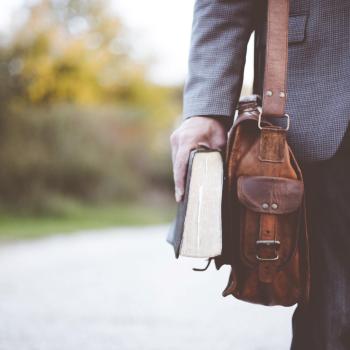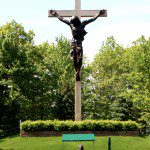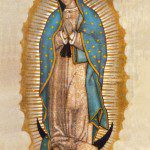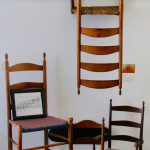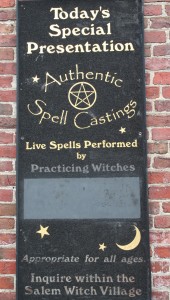
There’s a certain amount of irony in the fact that while Salem’s infamous reputation was formed as a result of its fear of witches, today it is a place where witches gather openly. By witches I mean those who follow the Wiccan religion, a nature-based faith that traces its origins to pagan Celtic traditions in the British Isles.
Attractions such as Salem Witch Village make it clear that modern-day witches are entirely different from the twisted view of witchcraft promulgated centuries ago by the church. They don’t worship the devil, or even acknowledge his existence. Instead they have a reverence for the cycles of nature and celebrate closeness with the earth. A central tenet is the “Rule of Three,” meaning that whatever one sends out into the world returns threefold—and thus rituals are performed for positive reasons, not negative ones. I was amused to learn that the witches of Salem even have a public relations effort called the Witches Education Bureau.
Today there are between 800 and 1600 witches in Salem. A number of the downtown shops are operated by Wiccans and sell herbs, charms, talismans, and other magical equipment. If you want to have your palm read or a spell cast to find a new love, there are plenty of people in Salem who can help you out.
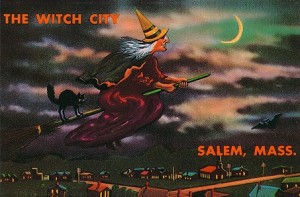 Not surprisingly, the month of October is Salem’s busiest time of year, with a full slate of Haunted Happenings. While I haven’t been there on Halloween, I’m sure there are hundreds of costumed witches walking the streets then, a sight that must make those stern Puritan judges spin wildly in their graves. And throughout the year, the town’s police cars bear a witch logo and the Salem High School’s mascot is (you guessed it) a witch.
Not surprisingly, the month of October is Salem’s busiest time of year, with a full slate of Haunted Happenings. While I haven’t been there on Halloween, I’m sure there are hundreds of costumed witches walking the streets then, a sight that must make those stern Puritan judges spin wildly in their graves. And throughout the year, the town’s police cars bear a witch logo and the Salem High School’s mascot is (you guessed it) a witch.
Now one can have two reactions to all of this. One is to feel that the memory of the victims of the Witch Trials is cheapened by the embrace of witchcraft in Salem today. Those innocent people who were executed were not witches and did not practice any form of magic, however benign.
But it’s also possible, I think, to appreciate the fact that Salem today is a measure of how far our nation has come. While we still struggle with religious intolerance in various forms, its most virulent forms have been vanquished. The thriving pagan community in Salem is a testimony to religious freedom in America—freedom which in part was forged in the fires of the Salem Witch Trials. The horror with which the larger nation reacted to the trials led in no small part to our constitutionally protected right to religious freedom and to the separation of church and state.
And so today let us remember the names of those who died in Salem. Here are the nineteen who were hanged on Gallows Hill in 1692:
Bridget Bishop
Rebecca Nurse
Sarah Good
Susannah Martin
Elizabeth Howe
Sarah Wildes
George Burroughs
Martha Carrier
John Willard
George Jacobs, Sr.
John Proctor
Martha Corey
Mary Eastey
Ann Pudeator
Alice Parker
Mary Parker
Wilmott Redd
Margaret Scott
Samuel Wardwell
One man was pressed to death: Giles Corey.
Four died in prison: Sarah Osborn, Roger Toothaker, Lyndia Dustin, and Ann Foster.
May they rest in peace, and may we never again hunt witches, in whatever form they appear.





